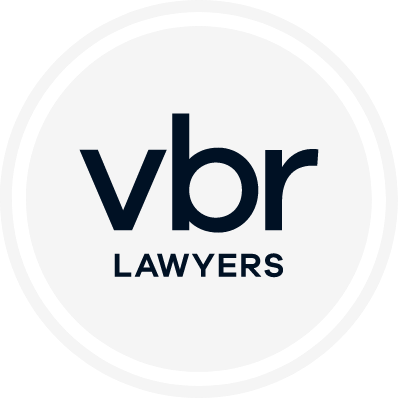In our legal system as it once existed, the only way an injured person could access common law damages compensation was to file a claim in court. For some years now however, that right has been modified by the requirement to first engage in a pre-court process which is designed to resolve a claim by negotiation before court proceedings.
This pre-court process, with some variations, applies across the board to the main categories of personal injury compensation claims. Somewhat different procedures are imposed as between claims for work injuries, motor vehicle accidents, and public liability incidents but essentially they are similar processes, comprising of:
- the giving of notification of a claim to the at-fault party and/or their insurer;
- provision of all the evidence in support of the claim;
- disclosure of all documents relevant to the claim; and
- the holding of a settlement negotiation meeting (usually called a “compulsory conference”).
The aim, or at least the hope, is that the claim is resolved at the compulsory settlement conference.
This article is about the compulsory settlement conference, the processes that apply and some of the considerations that are involved.
The compulsory settlement conference is a meeting between the parties and their legal representatives. Sometimes it is held as a mediation – that is, chaired by an independent mediator. Whether or not a compulsory conference proceeds as a mediation depends on the circumstances. If for example a claim has been brought against multiple parties (“respondents”), it may be very useful to have a mediator there to facilitate not only discussions between the claimant and respondents but between the respondents themselves, especially if there are issues about how much each of them have to contribute to any settlement.
But most compulsory conferences, such as in a motor vehicle accident claim as between an injured claimant and the compulsory third party insurer of a single at-fault vehicle, are conducted without a mediator.
Once the compulsory conference is arranged, the starting point is an advice from your lawyer in advance of the settlement conference. This is an advice that the lawyer is required to provide which deals with:
- What is likely to happen at the upcoming settlement conference;
- The legal costs that have been incurred to date and the likely legal costs if the matter does not resolve at the settlement conference; and
- If your claim settles, how an in-hand payment (i.e. your net outcome after deduction of costs, refunds and legal costs) is going to be calculated.
Having received this advice, while there is usually no certainty about whether the claim will be resolved at the compulsory conference, you should at least have a sense of what issues are going to be discussed and, should your claim settle, how an in-hand payment is going to be arrived at. Ultimately what is of key concern is what your net outcome from any settlement is so you can make an informed decision about any settlement.
The compulsory conference itself usually has the following components:
- An initial meeting between you and your legal representatives. This will at least be your solicitor, but it is very common to have a barrister appearing for you as well. The purpose of this meeting is to ensure that your legal team is completely up to date and across the impact of the injury upon you, and to obtain your approval for an opening offer of settlement;
- The face-to-face meeting with the respondent(s) and its/their legal representatives. This will start with your representatives setting out the strengths of your case and making the offer of settlement that you have previously approved. The respondent’s team will then their part in response so, just as your representatives have set out the strengths of your case, the respondent will spend time setting out what it considers to be the weaknesses of your case. In that face-to-face meeting you will not be required to speak or answer any questions. It is simply an opportunity for you to observe the discussion so you can fully understand the issues in the claim;
- The negotiation phase. Here each team retreats to separate rooms. The respondent will have your offer, and it will then be a matter of waiting to see what the respondent’s counteroffer is. Sometimes the respondent makes that offer in the face-to-face meeting but usually it is done after a period of separate consideration. Being a negotiation, it is typical that your offer will be at the high end of the range of outcomes that might apply to your case, just as the respondent’s offer will be at the low end of the range of outcomes that apply to your case. From there it is a matter of negotiating. Perhaps your legal representatives will then obtain your instructions to make a further reduced offer and if you approve that, will then go and make that offer to the respondent party, The respondent party may then make a counteroffer, and offers may be exchanged back and forth in that way. It is very difficult to predict from one conference to the next how much negotiation is going to occur. Perhaps many offers may be exchanged or perhaps one or two offers are going to be exchanged before either the parties can reach an agreement, or it appears no agreement is going to be possible; and
- The exchange of written final offers, this step only applies if no settlement has been reached. In that case, the parties are required to exchange final offers in writing. These offers stay open for 14 days. This allows each party to take some time to consider the matter.
Upon expiry of the offers, the claimant is able to commence proceedings in court which in any case have to be commenced no later than 60 days following the conference date. This decision to commence proceedings or not is a decision for you to make based on your legal advice.
If court proceedings are commenced, there will be further opportunities to negotiate your claim within the court process before an actual trial in court. Indeed very few claims that are commenced in court ever proceed to a court trial. Most are settled in further negotiations that occur within the court process.
The compulsory settlement conference is accordingly an opportunity for you to settle your claim before court proceedings are filed. If the matter does not settle, it at least provides an opportunity for you to clearly understand the issues in your case, and for your lawyers to be fully prepared to commence the court process if that is what you, based on legal advice, choose to do.


